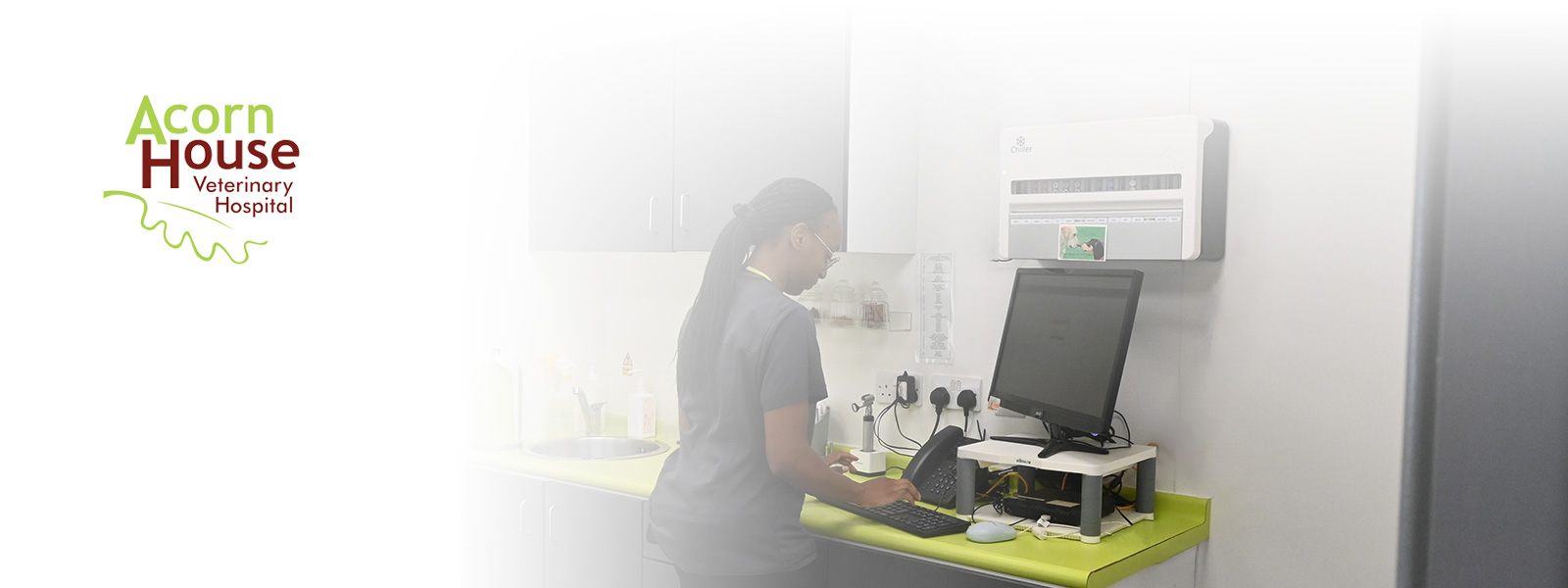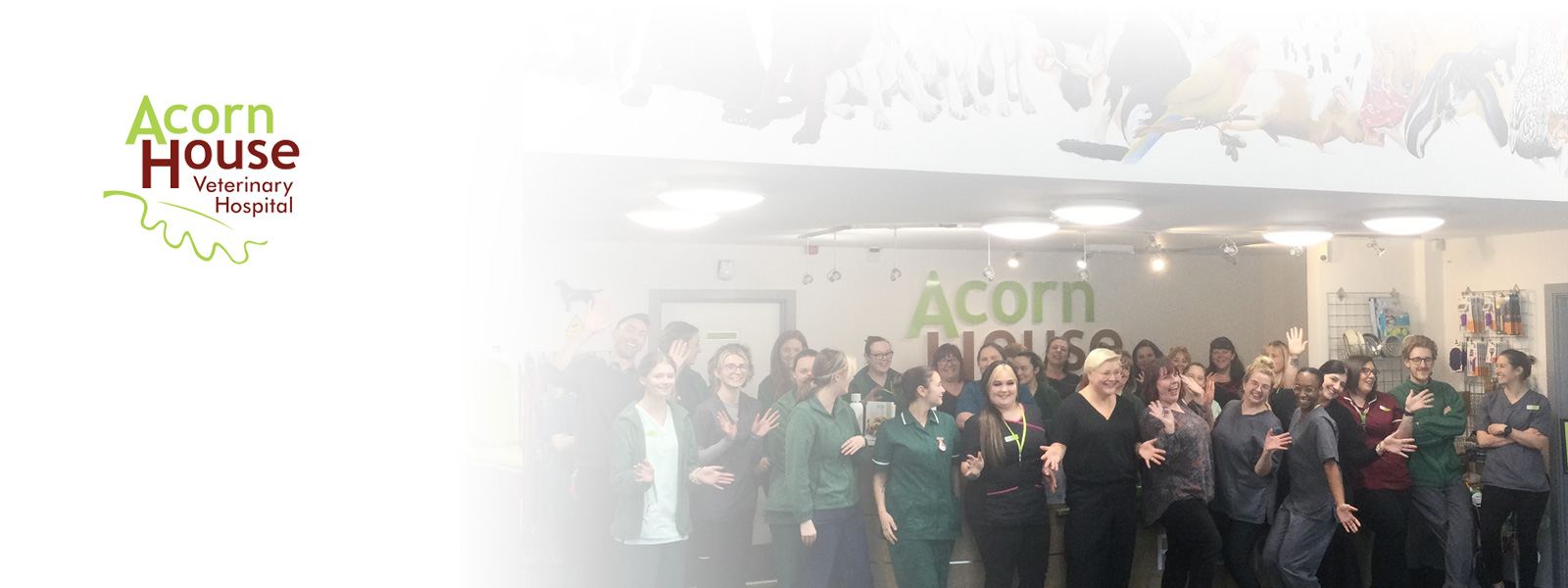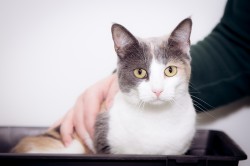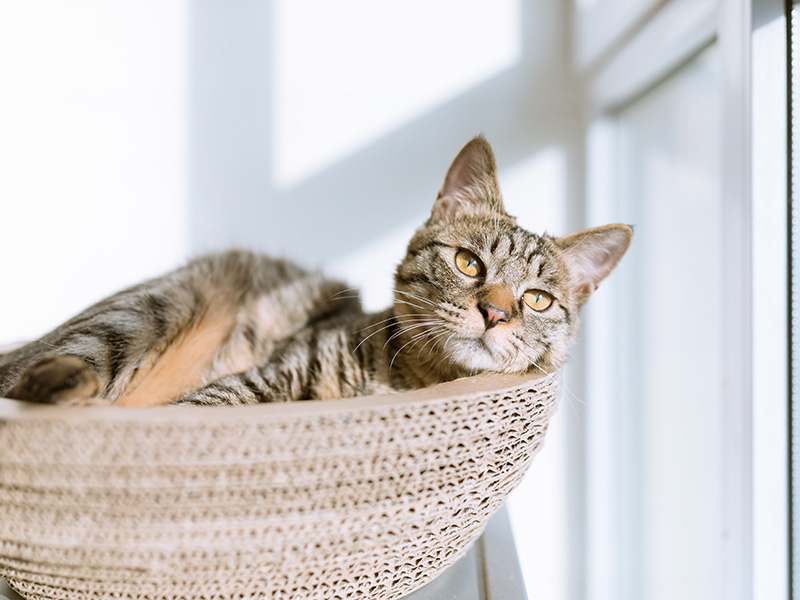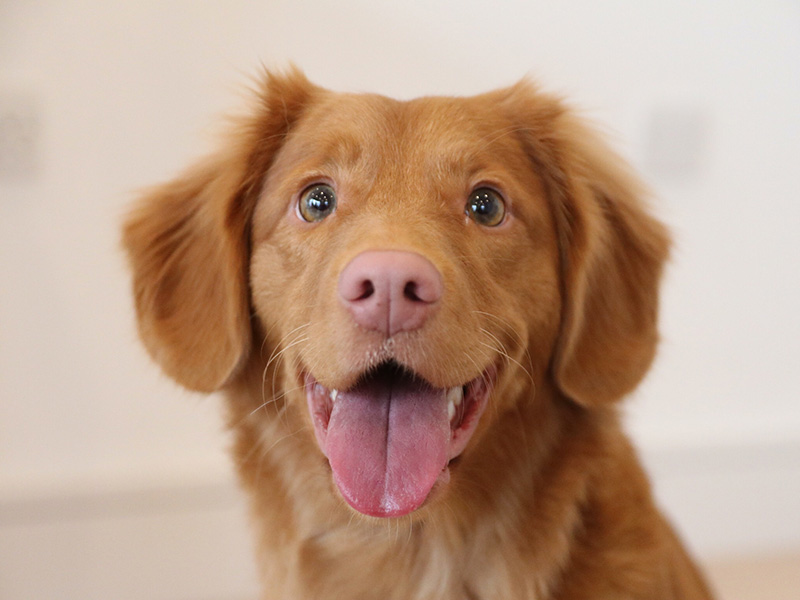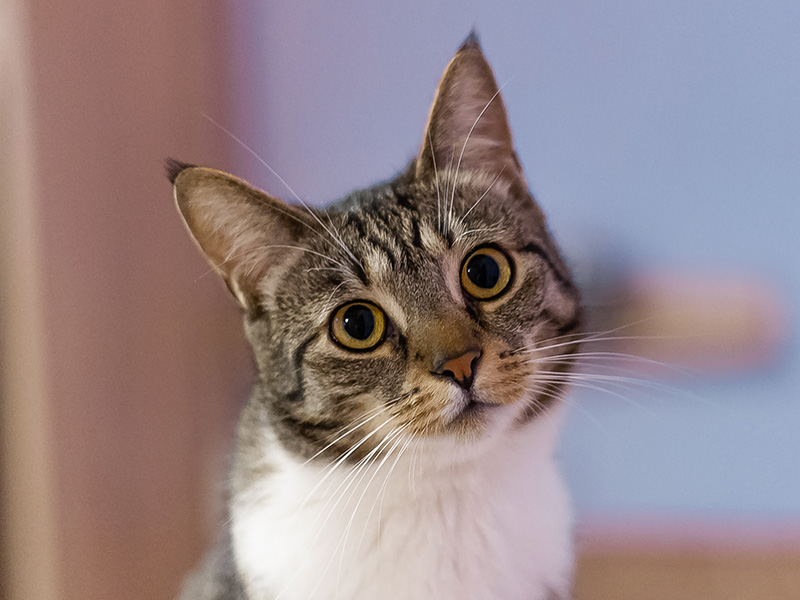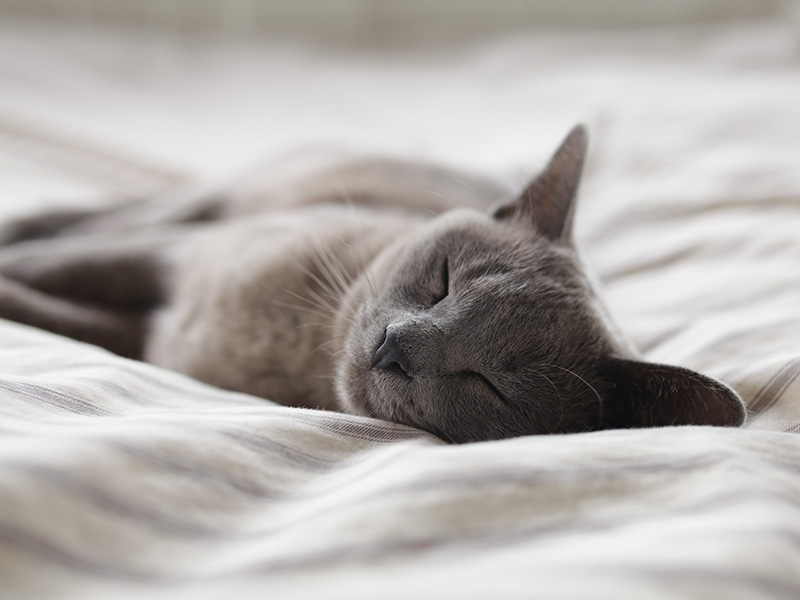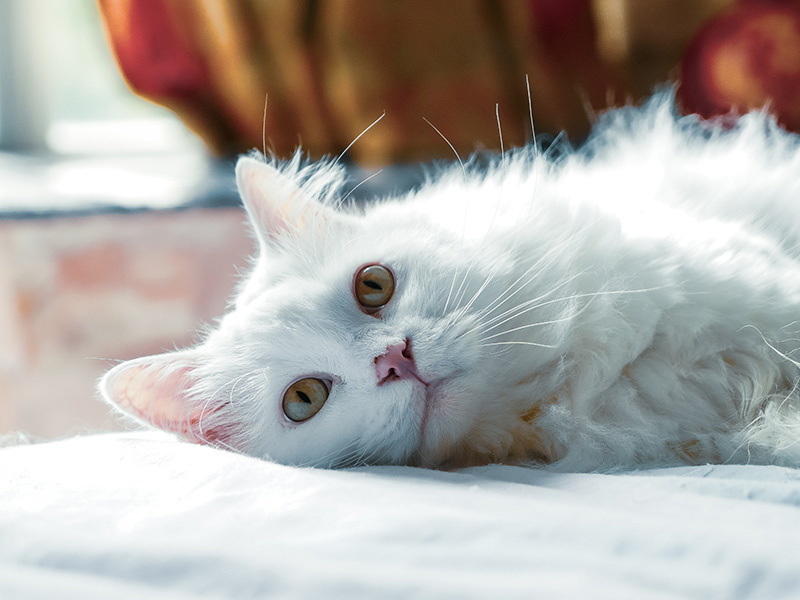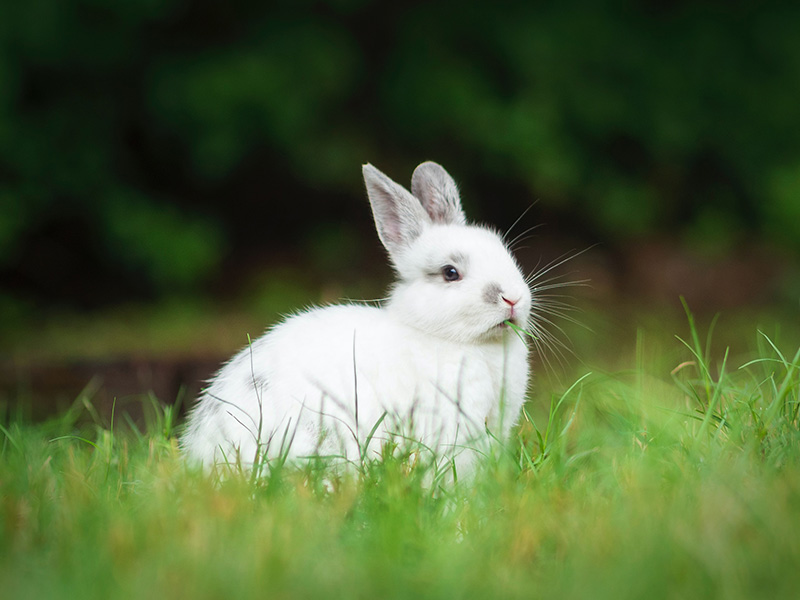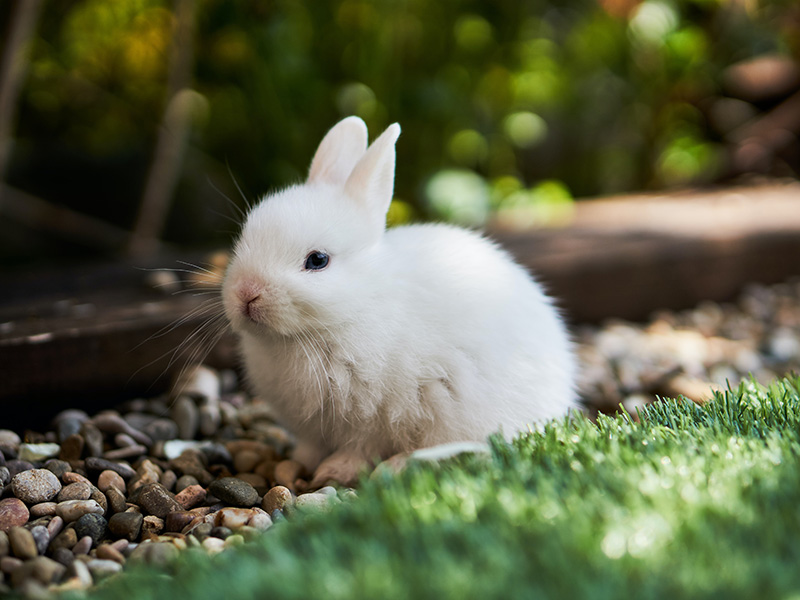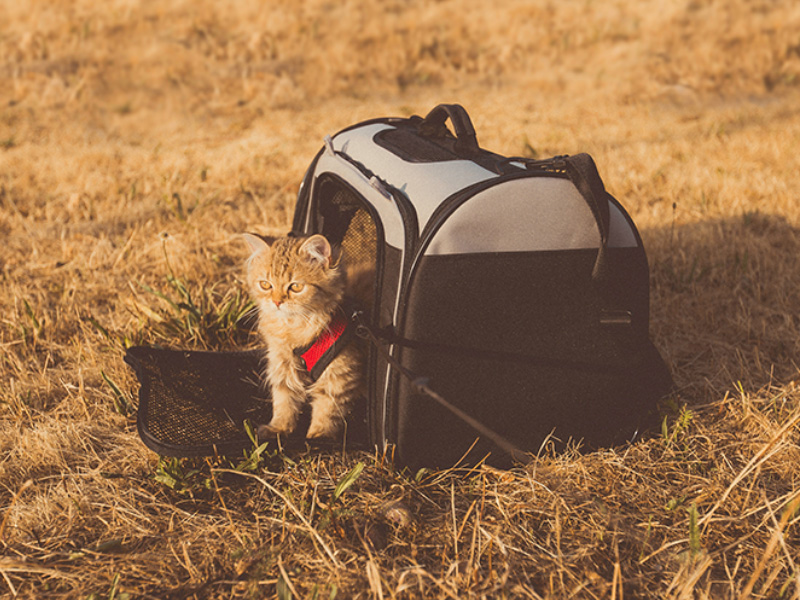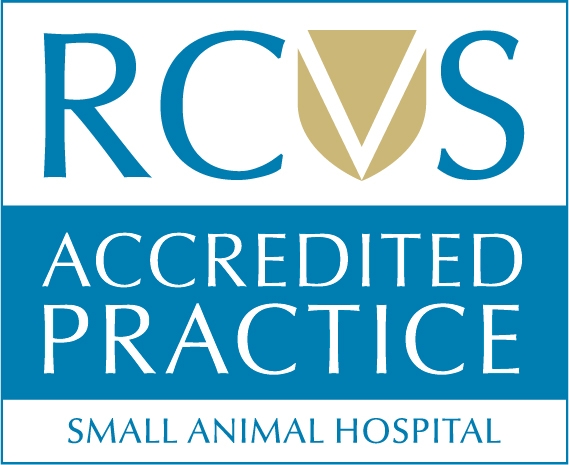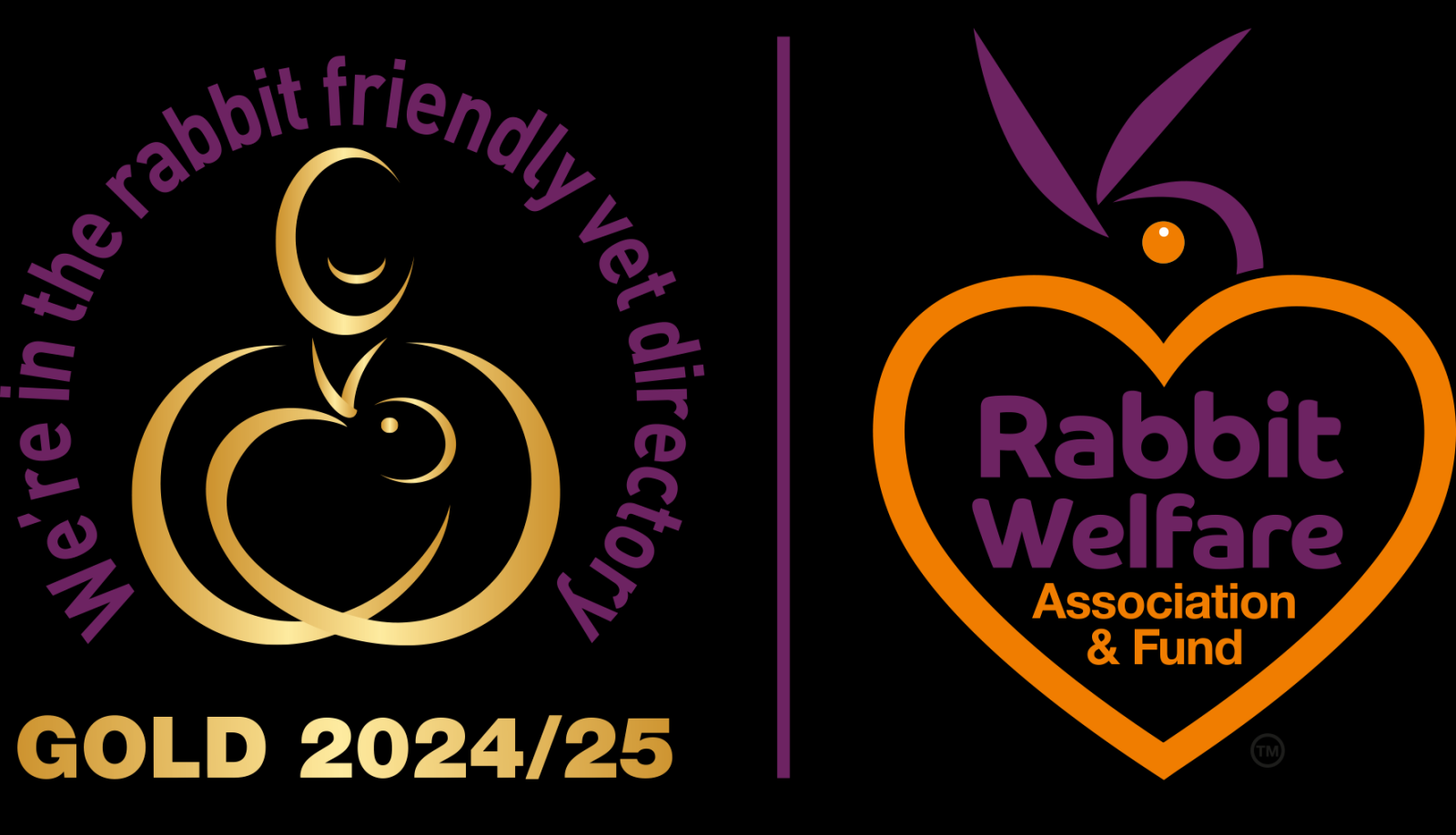Cats & Kittens
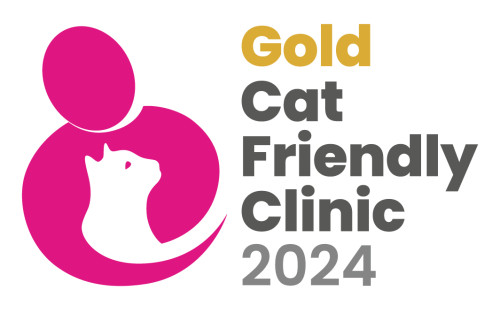 Acorn House Veterinary Surgery has been accredited as the only gold standard "cat friendly" clinic in Bedford by the International Society of Feline Medicine.
Acorn House Veterinary Surgery has been accredited as the only gold standard "cat friendly" clinic in Bedford by the International Society of Feline Medicine.
Choosing a new kitten/cat
How many cats?
Socialisation
Training your kitten
The journey home
Arrival at the new home
Territory
Introducing a new cat
Feeding
Play
Visiting the veterinary surgery
Choosing a new kitten or cat
Cats are brilliant pets – they can be affectionate and rewarding companions, but also tend to be much more independent than dogs.
Kittens are often available from private homes, breeders and animal charities. If you are looking for a sociable cat to be part of a busy family, it is best to choose a kitten with a mother that is friendly towards people and that has been born into and brought up in a home environment similar to your own. Be wary of purchasing kittens that are rehomed from a home other than their birth-place, or from breeders with multiple litters at any one time.
Orphan kittens can be hand reared and may then be available for rehoming. Kittens that have been raised in isolation from other kittens or a mother cat are likely to be poorly socialised and are often best suited to quiet households without other animals or children. They can also have a tendency to display attention seeking or aggressive behaviours towards humans in the house. Such kittens are often best placed with experienced owners and the advice of your vet or a veterinary behaviourist may be helpful if you are considering rehoming a hand reared kitten.
It is best to rehome a kitten that has been born to a mother cat that is up to date with vaccinations, flea treatment and worming. This is because suffering from certain illnesses and parasites at an early age can cause permanent health problems. Be wary of choosing kittens with discharge from the eyes or nose, diarrhoea, poor coat condition or that are underweight. If buying from a breeder you could check whether the kitten is sold with temporary pet insurance to cover unexpected veterinary costs, or an agreement stating that purchase is subject to a satisfactory veterinary examination within 72 hours of purchase.
Kittens require a lot of attention and can be destructive. Taking on a kitten may mean committing yourself to 20 years or so of care. For some households, rehoming an adult cat may be a more suitable option. Rehoming charities such as Wood Green Animal Shelter or the Cats Protection League often have adult cats that need new homes. These cats have often been neutered, vaccinated and checked by a vet prior to rehoming. Again, it is sensible to select a cat with a temperament that is suited to your household – a nervous cat that has lived for many years in a quiet household or as a stray may not enjoy going to live with a busy, noisy family for example. The workers and volunteers at rehoming charities tend to be very knowlegeable about the cats that they are caring for and will usually advise you as to which cats are best suited to your circumstances.
How many cats?
Cats can learn to tolerate other cats in the household but they do not need to live with other cats, and in many cases prefer to be the only cat in the household. If you wish to have more than one cat, it is recommended that you take on two kittens from the same litter or a mother and daughter pair as this gives you a greater chance (but no guarantee!) that the cats will form a stable social group. It is possible to help cats from different social groups to tolerate living together in one household, and if you find yourself in this situation please contact the surgery so that our vets and nurses can advise you.
Socialisation
Early socialisation occurs whilst the kitten is still with his litter mates and mother. It is important that breeders or charity volunteers provide socialisation in the form of gentle handling and exposure to household sights and sounds during this time.
Most kittens are rehomed at approximately 8 weeks of age. This is midway through the socialisation period, so it is important that you continue to socialise your kitten. The first experiences your kitten has with new people, animals and situations are the most important. Take particular care to manage these situations to maximise the chances of your kitten developing a positive association in each case. For example, when a new kitten is first introduced to children or existing pets in the family, ensure that this meeting is calm and enjoyable for the kitten – supervise the children or pets closely, make sure that handling is gentle and the kitten is able to walk away if he chooses, watch the kitten’s body language to check that he is comfortable and not afraid. Providing tasty treats at this time is an excellent way to develop a positive association. Similarly, when first exposing the kitten to potentially frightening noises such as the vacuum cleaner, start with a large distance and perhaps a closed door between the kitten and the vacuum, wait until the kitten appears relaxed and then gradually increase the noise level/ decrease the distance over a number of occasions until the kitten is in close proximity to the vacuum cleaner without showing any distress. Again, providing gentle stroking/attention or food treats may speed up this process.
Gradual, positive introduction of lots of different stimuli and experiences during this period is the key to developing a confident, well-adjusted cat. Consider offering a variety of food types, welcoming visitors of different ages and genders to the home, introducing visitors with hats and walking aids, other pets (if the cat is going to live with dogs or other cats), noisy household appliances, musical instruments, grooming, gentle handling etc but make sure that the kitten is able to choose whether to approach or avoid each one, and the intensity of each experience is controlled to make sure that it is a pleasant one for the kitten.
Kittens/cats should be provided with a “safe haven”. This is a hiding place where the kitten feels safe and content. It can be a cardboard box, “igloo” style cat bed, or partially covered pet crate and is best positioned at a height, as cats feel safer if they are in an elevated position. The cat should learn that it will never be disturbed in this haven (make this a house rule, especially with children in the family!) and occasionally treats should be dropped into the safe haven when the cat is not around, so that he is pleasantly surprised the next time he enters the safe haven and associates it with good things. Having a safe haven helps cats with stress tolerance as they are able to get away from stressful or frightening things (such as visitors to the house, other pets, children) and choose to approach them in their own time.
Training your kitten
It is sensible to train your kitten to accept grooming, handling as if for a veterinary examination, and to willingly enter the cat carrier as this will make future care much less stressful for you and your cat. Again it is important to build up these situations gradually with lots of positive reinforcement. Your Cat magazine has an excellent “Train your cat” section at www.yourcat.co.uk with videos demonstrating this training.
Most kittens are already litter box trained when they arrive at 8 weeks of age. It is sensible to gently lift your kitten onto the litter tray after waking or eating to maximise the chances of him toileting in the correct place from the start. If you spot your kitten sniffing and scratching as if he is about to toilet away from the tray, gently move him into the tray. However, if he has already toileted in the wrong area, do not punish him. Put him into the tray and calmly clean up the accident using biological washing powder and warm water. If one area is repeatedly used for toileting either accept that your kitten finds this a suitable place and provide a litter tray there, or make the area inaccessible by placing furniture over it for a temporary period to break the habit.
Most cats prefer an uncovered litter tray that is kept very clean and contains fine, non-clumping litter. If you have more than one cat, you will need more than one litter tray. It should be placed in a position that is easy for the cat to find, but is in a quiet area where the cat feels safe enough to toilet.
If you plan for your cat to use a cat flap, introduce this at an early stage and be prepared to train your cat to use it. A transparent flap is usually easiest for a cat to adjust to.
The journey home
For new kittens, the journey to their new home may be the first time that they have travelled. As discussed previously, the first experience should be a positive one, as a negative first experience could set the kitten up to dislike travelling from then on.
Feliway is a synthetic pheromone produced to replicate the pheromone that a mother cat releases when suckling her kittens. It signals to the kitten that they are safe and helps them to bond to a person or place. It is available from your veterinary surgery as a diffuser (to plug into a central room in the house) and as a spray. The spray can be applied to a blanket 15 minutes before travel and the blanket should then be placed in the cat carrier. The spray contains an alcohol carrier so waiting 15 minutes for this to evaporate (and not spraying the carrier whilst the kitten is in it) is important so as not to cancel out the reassuring effect with the off putting alcohol smell. It is safest for the kitten to travel in the carrier during the car journey.
It is also important to close car doors gently to avoid frightening the kitten, and to ensure that the kitten is not transported just after eating a large meal, in case this causes sickness.
Arrival at the new home
A Feliway diffuser should be plugged in at the new home 5-7 days before the new kitten arrives. This will maximise the chances of the kitten feeling relaxed and positive about his new home.
As soon as the kitten arrives in the new home, he should be put into the litter tray and given the opportunity to toilet there.
It is very tempting to handle, stare at, pick up and stroke your kitten a lot in the first few days. However, if you can resist this urge, it is easier for your kitten to be allowed a little space to adapt to the new surroundings without feeling overwhelmed. In general, it is best to allow the kitten to approach you before providing fuss and attention, rather than cornering or picking him up when he has no choice. It will be particularly difficult for children to understand this when they are so excited about their new pet!
Territory and scent marking
Territory is very important to cats. They have scent glands on their tails, forepaws, forehead, lips and chin and rub these against furniture, objects and people to mark them. This is thought to help with territorial boundary marking but also provides landmarks for the cat’s reassurance and orientation. This means that it is important that you do not thoroughly clean away all scent marks that your cat creates in the house.
Scratching is another form of marking – it leaves the visual mark of the scratches alongside the scent from the paws. Fortunately, most cats will prefer a scratch post to our furniture, provided that the scratch post is tall enough, stable, and in a position that the cat considers an important marking area. If your cat repeatedly scratches a particular piece of furniture it is best to temporarily make this area inaccessible and provide a scratch post nearby.
Introducing a new cat to a cat household
As discussed earlier, bringing a new cat into a household that already contains a cat is potentially stressful for both the new and original cat. In most cases the cats can be managed and guided to tolerate each other, but we would recommend that you seek advice from the surgery before making the decision to introduce another cat, particularly if the original cat is elderly or suffers from any health problems known to be exacerbated by stress (urinary problems, skin problems).
Ideally a separate core-territory area will have been prepared for the new cat before it comes into the home, and for the first week or so the new cat should remain in this area and the original cat(s) in their core territory with no direct contact. A core territory should include areas for sleeping, eating, drinking and toileting. Areas of the house that are not in either core area can be time-shared between the cats, so that each cat has access to these areas at different times. This will allow gradual scent swapping between the two cats without any direct contact taking place. Cloths (muslins or handkerchiefs can be good) can be placed in the sleeping areas of each cat for a night at a time and then swapped over to introduce the scent of each cat to the other.
The next step is to gradually allow direct contact between the cats, ideally through a barrier such as a baby gate, whilst providing food treats to each cat on their own side of the barrier to encourage a positive association. Do not use the food treats to encourage the cats to approach each other as it is important that they choose to do this at their own pace and whilst concentrating on each other, not the food. The barrier can then be phased out and the cats allowed direct (supervised) contact with each other. It should be expected that the cats will continue to use their separate core areas even when they are allowed free access to the whole house.
Play
Play is very important for kittens as it helps with the development of movement sequences and thought processes. It is also an excellent form of social interaction with other kittens or with humans. Play is also important for adult cats. Kittens and cats usually play in short, intense bursts.
Most play is based on predation sequences, so most cats and kittens will enjoy chasing and pouncing on toys such as balls, dangly toys on a string, or even laser pointers. Make sure this play does not become frustrating by allowing your cat to “win” at regular intervals. This is especially important with toys like laser pointers where the cat can become very aroused and chase and pounce for long periods of time without actually catching anything. Intermittently switching the pointer off and throwing an actual soft toy or handful of treats should prevent this frustration from building.
If your kitten begins to play too roughly and is biting or scratching you then stop the game immediately and turn your back/ walk away. This will teach your kitten not to play in this way. You can then redirect your kitten with a toy and more appropriate play. Do not be tempted to allow rough play/ pouncing on hands or feet in a kitten because if this behaviour is carried on into adulthood, it can become a serious problem.
If you have more than one cat you can be sure that they are playing together if they show a mixture of behaviours (some chasing, some rolling, some pouncing) and if both cats take a turn at each sort of behaviour. If one cat is always jumping on/ biting/ chasing the other this is not play for the victimised cat and the behaviour of the aggressor should be redirected away with a toy.
Visiting the veterinary surgery
Most kittens will need to visit the vet fairly early on for an initial health check and vaccinations. Again, the first experience will be a formative one for the kitten, so it is important that it goes well. Early exposure to the cat carrier and the use of Feliway as described previously will help with the journey to the surgery. At Acorn House we are always happy to provide a free of charge nurse appointment, so if you would like your kitten’s first visit to simply be a fuss and some treats on the consulting table and book the vaccination appointment for a few days later, that can easily be arranged.
The reception staff will also be able to advise you on a quiet time to attend the surgery so that your kitten is not overwhelmed by a waiting room full of frightening animals. Putting the cat carrier on a chair or on your lap will also make your kitten feel safer. Do not be tempted to take your kitten out of the carrier to reassure him – this will make him feel less secure and is not safe if a dog were to enter the waiting room or the door were to open suddenly and your kitten escape.
The vets and nurses have cat treats at the surgery to help your kitten develop a positive association with the examination table. However, some kittens are too nervous to think about eating treats at the vets! If there is something very highly prized by your cat (such as prawns or salmon) you could bring some of that to the appointment. It is a good idea to reserve such high value treats solely for use at the vets even for adult cats, so that the stress of the journey and examination is made “worthwhile” each time.


